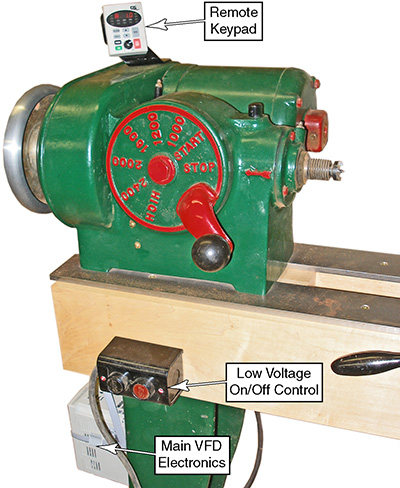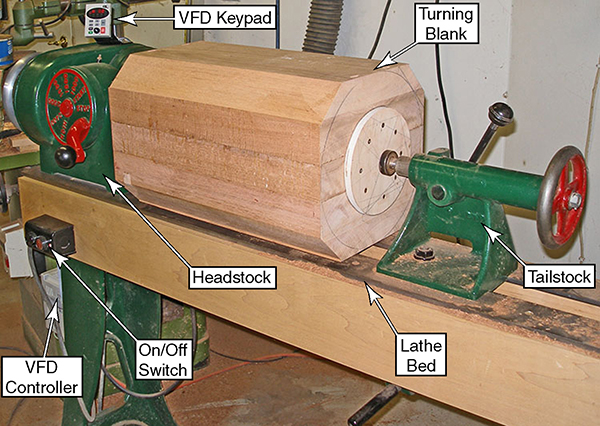You have 3 choices on how to supply power to your lathe motor (plus the option of replacing the motor).
Static Converter: A store-bought static converter should not even be considered an option, as they will only get the motor spinning, and then leave it to single-phase, and we all know how detrimental it can be to drop a phase from a motor. However, you can modify a store-bought converter (or build your own) to turn it into a "Balanced Static Converter", and this will provide the motor with a reasonable 3-phase input. My old Oliver lathe started out using a balanced static converter, but I discovered that the starting circuit kept reengaging when I loaded my much smaller lathe to full-load.
Rotary Converter: A rotary converter will give you pretty good 3-phase power at a broader range of tool load. The beauty of these is that if you know how to use a voltmeter, you can build your own for way less money than a store-bought converter (same applies to balanced static too). The downside to the RPC is that if you buy an off-the-shelf unit, you are spending about the same amount of money as you would spend on a VFD, without getting the extra benefits of a VFD for a lathe. But for an old legacy motor that you would have a hard time replacing, the RPC is the safest solution.
VFD: For a woodworking lathe, my number-one recommendation without reservation is a VFD. Even if your lathe uses a reeves drive for speed control (infinitely variable) it still has a minimum speed at which it can reduce the motor speed.
A few years ago when I needed to turn a very massive table pedestal, I removed the RPC from my lathe and replaced it with a VFD so I could slow the lathe down further than the reeves drive would permit. For normal turning operations, I keep the VFD at 60 hertz, and use the reeves drive for speed control (this is the healthiest method for the non-VFD-rated motor). But, when I need to run the lathe at very low rpm, I set the reeves drive to its lowest speed (less load on the motor) and then use the VFD to drop the motor speed.
Most VFDs that are designed for 1-phase input are smaller than 3 hp, but you can still use larger VFDs on single-phase as long as you derate them to 66% of their full-load rating. That's because the input section of the VFD rectifies the AC signal into a DC bus, and it is the amps/phase through each diode bank that limits the available power. However, a 7.5 hp lathe is HUGE, and it is very unlikely that you could ever load that motor to 66% of its rating. So in this case, if you derate the lathe to never exceed 5 hp (which is still huge), then you won't need to derate the VFD (save $$$) and can use a 7.5 hp VFD that outputs only 5 hp.
I have a few self-help articles on my
website for phase converters and the VFD is briefly mentioned in the
Contruction Blog for a $15,000 dining room table (that's where the pictures below came from).
I chose to use a GS2 VFD for my 800 pound, 1 hp Oliver lathe because it had the features I wanted, but also because it had a remote keypad/display that I could mount on top of the reeves drive so I could monitor speed and amperage to the motor.
This is a picture of the turning blank that prompted me to install the VFD. It weighs somewhere in the ballpark of 60+ pounds and is so large that I had to manually round the corners with a planer before I could turn it on the lathe.



